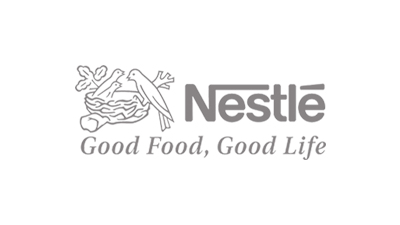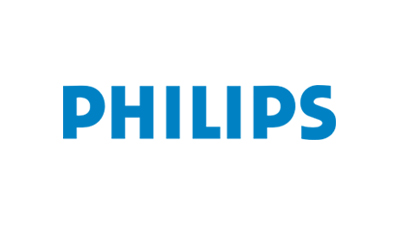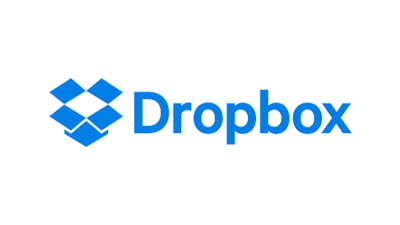The amorphous alloy is a non-crystal substance created by rapidly freezing liquids of high temperature. Because there is no rule of atomic arrangement, the energy loss (hysteresis loss) is small when the flux of magnetic induction passes through the iron core. In addition, eddy current loss is decreased because the thickness is approximately 0.03 mm, which is about 1/10 compared with silicon steel. Therefore, the no load loss (eddy current loss and hysteresis loss) can be decreased to about 1/5 of silicon steel's. Amorphous metal is an alloy with a non-crystalline structure produced by ultra-rapid quenching (about 1 million ? per second) of molten alloy. Because amorphous metal has no anisotropic properties, which originated from a crystalline structure, and there are no crystalline grain boundaries to prevent motion of magnetic domain walls, it shows excellent magnetic properties such as high permeability and low loss while having a high-saturation magnetic flux density. Amorphous metal cores are effective for most distribution transformers. They are ideally suited for renewable energy applications such as wind farm and solar power, as they typically operate with 20~40% low load conditions. Amorphous metal cores have been in use for over 20 years in liquid-filled transformers, and this technology is now being applied to dry type transformers. Historically, there was an initial interest in amorphous core transformers which stemmed from the first oil shock in the mid-1970s when improved energy efficiency in power distribution systems was increasingly desirable. This interest fell away in the mid-1990s when energy costs decreased. Furthermore, the initial costs of an amorphous core transformer are higher than of a crystalline silicon steel core transformer: first, the amorphous material itself is more expensive than crystalline silicon steel and second, the saturation magnetic flux density of amorphous steel is lower than that of silicon steel. This means larger sizes of amorphous core transformers are required, which results in a higher cost per unit. However, the higher initial costs can be compensated by lower operating costs over the lifetime of the transformers due to their increased energy efficiency. Nowadays, amorphous metal core transformers have become commercially available and are cost-competitive with conventional core transformers. There has also been significant technical progress in increasing the saturation magnetic flux density of iron-based amorphous alloys, resulting in smaller transformers and reduced material costs. The amorphous metal used in transformer cores is a unique alloy of FeヨSiヨB (iron, silicon and boron) that is produced by extremely rapid solidification from the alloy melt. This causes the metal atoms to form a random pattern, as opposed to conventional Cold-Rolled Grain-Oriented (CRGO) silicon steel (a FeヨSi alloy), which has an organized crystalline structure. The amorphous structure, usually associated with non-metallic systems looks like glass - which has prompted the name ムglassy metalメ widely used for such materials. The absence of a crystalline structure in amorphous metal allows easy magnetization of the material, leading to lower hysteresis losses. The eddy current losses are also lower in amorphous metal due to a combination of its low thickness and a high electrical resistivity of 130 ??-cm compared to the 51 ??-cm in CRGO silicon steels. Thus, amorphous metal has a much lower total loss than even the best grades of CRGO steel, by up to 70 percent. Amorphous metal cores have a proven track-record of over 20 years in liquid-filled transformers and this technology is now being applied to dry-type transformers. According to our (Global Info Research) latest study, the global Amorphous Metal Cores market size was valued at USD 861.8 million in 2022 and is forecast to a readjusted size of USD 1306.6 million by 2029 with a CAGR of 6.1% during review period. The influence of COVID-19 and the Russia-Ukraine War were considered while estimating market sizes. The market for amorphous metal core is concentrated with players such as Hitachi, Mangal Electrical Industries, UAML (Usha Amorphous Metals Limited), TI-Electronic, ENPAY, Shanghai Zhixin Electric, Advanced Technology & Materials, Zhaojing Incorporated Company, Qingdao Yunlu Advanced Material Technology, Foshan Catech, Kotsons and so on. Among them, Hitachi is the leader with about 57% revenue market share. This report is a detailed and comprehensive analysis for global Amorphous Metal Cores market. Both quantitative and qualitative analyses are presented by manufacturers, by region & country, by Type and by Application. As the market is constantly changing, this report explores the competition, supply and demand trends, as well as key factors that contribute to its changing demands across many markets. Company profiles and product examples of selected competitors, along with market share estimates of some of the selected leaders for the year 2023, are provided. Key Features: Global Amorphous Metal Cores market size and forecasts, in consumption value ($ Million), sales quantity (K MT), and average selling prices (USD/MT), 2018-2029 Global Amorphous Metal Cores market size and forecasts by region and country, in consumption value ($ Million), sales quantity (K MT), and average selling prices (USD/MT), 2018-2029 Global Amorphous Metal Cores market size and forecasts, by Type and by Application, in consumption value ($ Million), sales quantity (K MT), and average selling prices (USD/MT), 2018-2029 Global Amorphous Metal Cores market shares of main players, shipments in revenue ($ Million), sales quantity (K MT), and ASP (USD/MT), 2018-2023 The Primary Objectives in This Report Are: To determine the size of the total market opportunity of global and key countries To assess the growth potential for Amorphous Metal Cores To forecast future growth in each product and end-use market To assess competitive factors affecting the marketplace This report profiles key players in the global Amorphous Metal Cores market based on the following parameters - company overview, production, value, price, gross margin, product portfolio, geographical presence, and key developments. Key companies covered as a part of this study include Hitachi, Advanced Technology, Zhixin Electric, Zhaojing Incorporated and Qingdao Yunlu, etc. This report also provides key insights about market drivers, restraints, opportunities, new product launches or approvals, COVID-19 and Russia-Ukraine War Influence. Market Segmentation Amorphous Metal Cores market is split by Type and by Application. For the period 2018-2029, the growth among segments provides accurate calculations and forecasts for consumption value by Type, and by Application in terms of volume and value. This analysis can help you expand your business by targeting qualified niche markets. Market segment by Type C Core E Core Others Market segment by Application Transformer Inverter Others Major players covered Hitachi Advanced Technology Zhixin Electric Zhaojing Incorporated Qingdao Yunlu Foshan Catech ENPAY Mangal Kotsons UAML TI-Electronic Market segment by region, regional analysis covers North America (United States, Canada and Mexico) Europe (Germany, France, United Kingdom, Russia, Italy, and Rest of Europe) Asia-Pacific (China, Japan, Korea, India, Southeast Asia, and Australia) South America (Brazil, Argentina, Colombia, and Rest of South America) Middle East & Africa (Saudi Arabia, UAE, Egypt, South Africa, and Rest of Middle East & Africa) The content of the study subjects, includes a total of 15 chapters: Chapter 1, to describe Amorphous Metal Cores product scope, market overview, market estimation caveats and base year. Chapter 2, to profile the top manufacturers of Amorphous Metal Cores, with price, sales, revenue and global market share of Amorphous Metal Cores from 2018 to 2023. Chapter 3, the Amorphous Metal Cores competitive situation, sales quantity, revenue and global market share of top manufacturers are analyzed emphatically by landscape contrast. Chapter 4, the Amorphous Metal Cores breakdown data are shown at the regional level, to show the sales quantity, consumption value and growth by regions, from 2018 to 2029. Chapter 5 and 6, to segment the sales by Type and application, with sales market share and growth rate by type, application, from 2018 to 2029. Chapter 7, 8, 9, 10 and 11, to break the sales data at the country level, with sales quantity, consumption value and market share for key countries in the world, from 2017 to 2022.and Amorphous Metal Cores market forecast, by regions, type and application, with sales and revenue, from 2024 to 2029. Chapter 12, market dynamics, drivers, restraints, trends, Porters Five Forces analysis, and Influence of COVID-19 and Russia-Ukraine War. Chapter 13, the key raw materials and key suppliers, and industry chain of Amorphous Metal Cores. Chapter 14 and 15, to describe Amorphous Metal Cores sales channel, distributors, customers, research findings and conclusion.
1 Market Overview 1.1 Product Overview and Scope of Amorphous Metal Cores 1.2 Market Estimation Caveats and Base Year 1.3 Market Analysis by Type 1.3.1 Overview: Global Amorphous Metal Cores Consumption Value by Type: 2018 Versus 2022 Versus 2029 1.3.2 C Core 1.3.3 E Core 1.3.4 Others 1.4 Market Analysis by Application 1.4.1 Overview: Global









